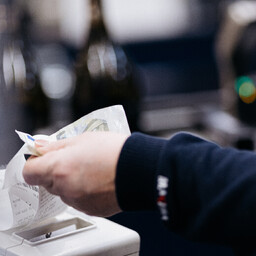Teisipäevast on käibemaks Eestis 24 protsenti. Enne oli see 22 protsenti. See muutus mõjutab kõiki kaupu ja teenuseid.
Kõige rohkem mõjutab käibemaksu tõus toidupoode. Toidukaupade hinnad on juba tänavu tõusnud. Nüüd tõusevad hinnad veelgi. Müügimahud on langenud.
Bensiiniaktsiis tõuseb ka viis protsenti. See tähendab, et bensiin muutub kallimaks.
LHV majandusanalüütik Triinu Tapver
ütleb, et käibemaksu tõus mõjutab kõige rohkem toidukaupade hindu. Toidusektoril pole seni häid tulemusi näidata.
LHV majandusanalüütik Triinu Tapver
Tõlge fraasile: LHV majandusanalüütik Triinu Tapver
EN
LHV economic analyst Triinu Tapver
Käibemaksu tõus kiirendab ka inflatsiooni. Keskmiselt peaks hinnatõus poodides jääma 1,6 protsendi juurde. Kuid elu on näidanud, et hindu tõstetakse rohkem. Näiteks LHV pank prognoosib aastaseks inflatsiooniks kuus protsenti.
Eesti Panga hinnangul on
Eesti majanduse kõige suuremaks murekohaks
kiire hinnatõus. See võib sel aastal olla 5,4 protsenti.
Eesti majanduse kõige suuremaks murekohaks
Tõlge fraasile: Eesti majanduse kõige suuremaks murekohaks
EN
the biggest concern for the Estonian economy
Eesti Panga ökonomist Rasmus Kattai
ütles, et kõige suurem murekoht on kiirelt tõusev hinnatase. Tänavu võib see olla umbes 5,5 protsenti. Toiduainete kallinemine ja maksutõusud põhjustavad seda.
Eesti Panga ökonomist Rasmus Kattai
Tõlge fraasile: Eesti Panga ökonomist Rasmus Kattai
EN
Estonian Bank economist Rasmus Kattai
Käibemaksu tõusu otsustas Reformierakonna, Eesti 200 ja sotsiaaldemokraatide valitsus. See on osa
laia julgeolekumaksust
. Sellega pidi riik koguma 2028. aasta lõpuks pea 2,5 miljardit eurot.
laia julgeolekumaksust
Tõlge fraasile: laia julgeolekumaksust
EN
broad security tax
Rahandusministeeriumi arvutuste järgi toob käibemaksu tõus
riigikassasse rohkem raha
. 2025. aastal on see 113 miljonit eurot, 2026. aastal 235 miljonit, 2027. aastal 242 miljonit ja 2028. aastal 252 miljonit eurot.
riigikassasse rohkem raha
Tõlge fraasile: riigikassasse rohkem raha
EN
more money into the state treasury
Starting Tuesday, VAT in Estonia will be 24%. Previously, it was 22%. This change affects all goods and services.
The VAT increase will most affect grocery stores. Food prices have already risen this year. Now prices will rise even more. Sales volumes have declined.
The fuel excise tax will also increase by five percent. This means that fuel will become more expensive.
LHV economic analyst Triinu Tapver says that the VAT increase will most affect food prices. The food sector has not shown good results so far.
The VAT increase will also accelerate inflation. On average, price increases in stores should remain around 1.6%. However, life has shown that prices are raised more. For example, LHV Bank forecasts an annual inflation rate of six percent.
According to the Bank of Estonia, the biggest concern for the Estonian economy is the rapid price increase. This year it could be 5.4%.
Bank of Estonia economist Rasmus Kattai said that the biggest concern is the rapidly rising price level. This year it could be around 5.5%. The increase in food prices and tax hikes are causing this.
The VAT increase was decided by the Reform Party, Eesti 200, and the Social Democratic government. It is part of a broad security tax. With this, the state was supposed to collect almost 2.5 billion euros by the end of 2028.
According to the Ministry of Finance's calculations, the VAT increase will bring more money to the state treasury. In 2025, it will be 113 million euros, in 2026 235 million, in 2027 242 million, and in 2028 252 million euros.

